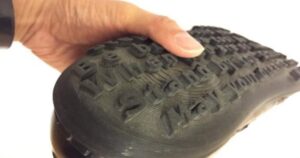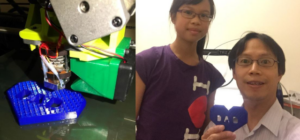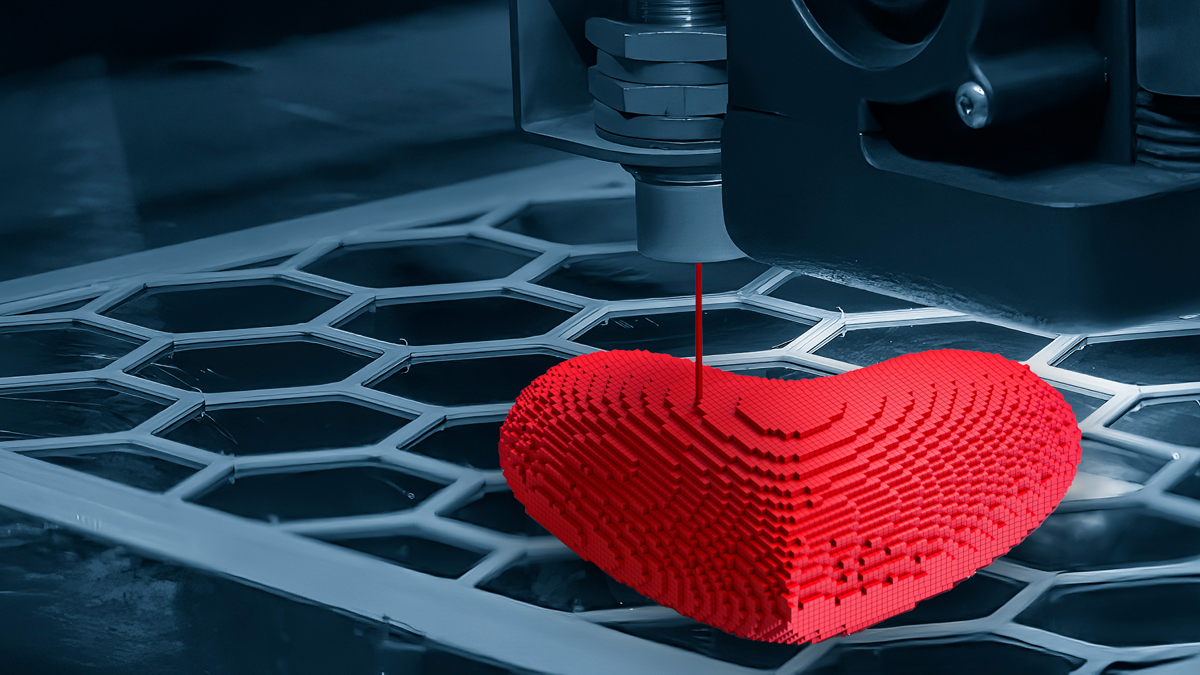A Passion For 3D Printing: Dickson Cheung’s Journey
I fell in love with 3D printing very early on – even earlier than my coming to PerkinElmer in 2012. I had come up with a novel design to make dress shoes with excellent airflow ventilation so that they are very comfortable to wear for the whole day. They are designed for businesspeople, doctors, lawyers, and professionals who must wear dress shoes for work, conferences, long trips, and other occasions where shoes must be worn – and where sandals are inappropriate!
 Out of curiosity, I 3D printed the shoes to test the concept. They were wearable, and for two years I wore them to work every day while at the PerkinElmer Woodbridge site, in Canada, and for my long trips to Hong Kong and other locations. They were printed with my own home 3D printer – this was before PerkinElmer bought the first 3D printer for Woodbridge R&D. Most developers, including us at Woodbridge R&D, print with ABS or PLA plastic, which is rigid but fragile. So for my homegrown project, I decided to try out a flexible TPU 3D printing material that was relatively new at that time, to make the flexible sole for ventilation.
Out of curiosity, I 3D printed the shoes to test the concept. They were wearable, and for two years I wore them to work every day while at the PerkinElmer Woodbridge site, in Canada, and for my long trips to Hong Kong and other locations. They were printed with my own home 3D printer – this was before PerkinElmer bought the first 3D printer for Woodbridge R&D. Most developers, including us at Woodbridge R&D, print with ABS or PLA plastic, which is rigid but fragile. So for my homegrown project, I decided to try out a flexible TPU 3D printing material that was relatively new at that time, to make the flexible sole for ventilation.
Later in 2016, I came up with a new product idea: using stuffed animals with zippers to reveal the internal organs, to teach young kids about anatomy. This idea presented many challenges that were too difficult to overcome at that time – perhaps I’ll return to this idea in future! But still, the project was fascinating and I even got my kids involved, which was fun and educational for them, too.
 When my watch strap broke in 2017, I figured I’d 3D print the repair. Why not? It was a success, and I even got creative, printing the letters “MYOB” onto the underside – to remind myself to mind my own business!
When my watch strap broke in 2017, I figured I’d 3D print the repair. Why not? It was a success, and I even got creative, printing the letters “MYOB” onto the underside – to remind myself to mind my own business!
I love the educational possibilities of 3D printing and encourage my children to have fun and get creative. In 2019, my 12-year-old daughter designed and printed her own Father’s Day gift to me – a blue heart with “DAD” carved out.
Today, the 3D printer at Woodbridge prints parts with ABS material, which is very rigid. So when I need a custom part that has to be flexible (like soft O-ring material) for research work, I use my home printer configured for flexible TPU material to print the part, so that the experiment can be quickly prototyped.
3D printing opens up so many possibilities for science and researchers like me. I think I’ll be experimenting with my 3D printing ideas for many years to come.
Best regards,
Dickson
Tak Shun (Dickson) Cheung is the senior manager of Research & Innovation at PerkinElmer’s Woodbridge R&D site in Canada.
Today, Dickson and his colleagues at Woodbridge are leveraging 3D printing for faster prototyping and advancing research projects.
Discover more about industrial analytical applications for PerkinElmer instruments and supporting lab services by visiting our Advanced Materials Analysis solutions page.

